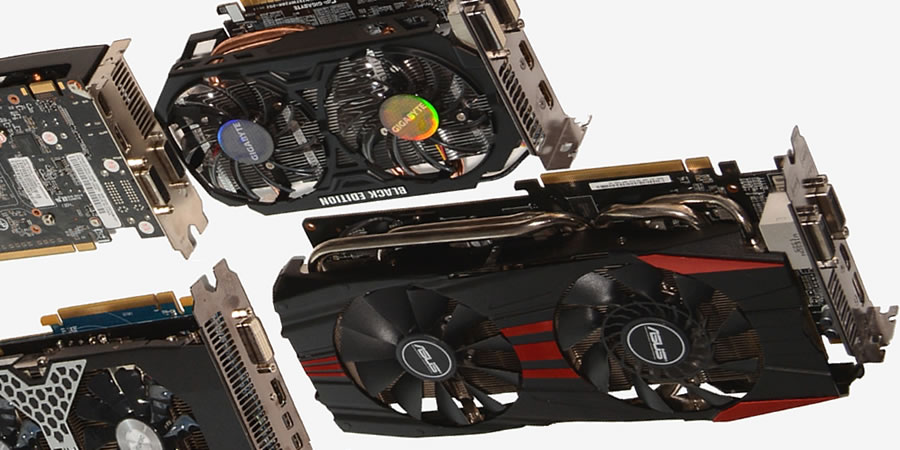Wrap Up: Making Some Picks
Before we kick off with the best picks we just want to mention that we didn't test any dual-GPU cards. The GeForce GTX Titan Z was excluded because its pricing is absurd for gaming and that's what we were testing, gaming performance. For the same price gamers can purchase a 3-way GTX 980 setup which will deliver considerably better frame rates. Likewise, the R9 295X2 was left out because it makes no sense at $1,000 -- gamers are far better off purchasing two R9 290X cards for a little over 25% less.
Starting from the bottom of the food chain, the sub-$150 battle takes place primarily between the GTX 750 and R7 260X. Both cost around $120, making this one of the easiest comparisons that we have to make. The R7 260X gets the nod as it's 8% faster at 1920x1200 and therefore better value. With these low-end cards we are not too concerned about power consumption and instead make fps the priority.
Moving up to the $150-$200 bracket, the $150 GTX 750 Ti competes directly with the R7 265, though we also find the R9 270 ($170) and R9 270X ($190). We can eliminate the R9 270X as it's a pretty poor value with AMD's own R9 280 delivering on average 17% more performance for a mere 5% bump in price. We can also forget about the R9 270 as the R7 265 is better value – R9 270 costs 13% more and is just 7% faster.
This makes the R7 265 the only viable option from AMD in the $150-$200 territory, but that's okay because it's 13% faster than the GTX 750 Ti at same price, making AMD's card an obvious choice.
With AMD winning our $100-$150 and $150-$200 categories, perhaps Nvidia will have more luck in the $200-$250 range, which includes the R9 280 for $200, the GTX 760 for slightly more at $220, and the R9 285 for $250. We can drop the R9 285 for costing 25% more than the R9 280 while being only 4% faster, which leaves the R9 280 vs. the GTX 760. In that battle, Nvidia's card is 10% more expensive yet also 2% slower, making the R9 280 our pick.
If you're looking to spend $250-$300 on a gaming graphics card, the R9 280X is among your options but at $260 it has been made redundant by the now $280 R9 290, which is faced against the ill-equipped GTX 770 at $270. Although the GTX 770 is 4% cheaper, it's 16% slower, making AMD's R9 290 the smarter choice here.
The final head to head battle takes place at ~$370 between the R9 290X and GTX 970 (the GTX 780 can also be found in this price range but is pointless with the GTX 970 around). With the same price as the R9 290X, the GTX 970 is 4% slower but consumes 16% less power, so it could be the better choice.
Due to AMD's aggressive price cuts, the battle between the R9 290X and GTX 970 is closely fought, but we think Nvidia wins this one. However, it's hard to ignore the R9 290 from a value perspective as it is 24% cheaper. Given that the GTX 970 costs 32% more and delivers just 16% more performance, we have to question if you should buy either the R9 290X or GTX 970 over the much cheaper and not significantly slower R9 290.
If performance is the ultimate goal then your weapon of choice should be the GTX 980 at $580.
| The best graphics cards at every price range | ||
| $400 - $600 | GeForce GTX 980 | $580 |
| $300 - $400 | GeForce GTX 970 | $370 |
| $250 - $300 | Radeon R9 290 | $280 |
| $200 - $250 | Radeon R9 280 | $200 |
| $150 - $199 | Radeon R7 265 | $150 |
| $100 - $149 | Radeon R7 260X | $120 |
In a nutshell, the R7 260X is the best $100-$150 solution, the R7 265 is your card if you have $150-$200 to spend, the R9 280 is your best bet at $200-$250, and the R9 290 is a smart pick at $250-$300. If your GPU budget extends to $300-$400 we recommend the GTX 970 and if you're going to drop $400 or more the GTX 980 wins by default.

